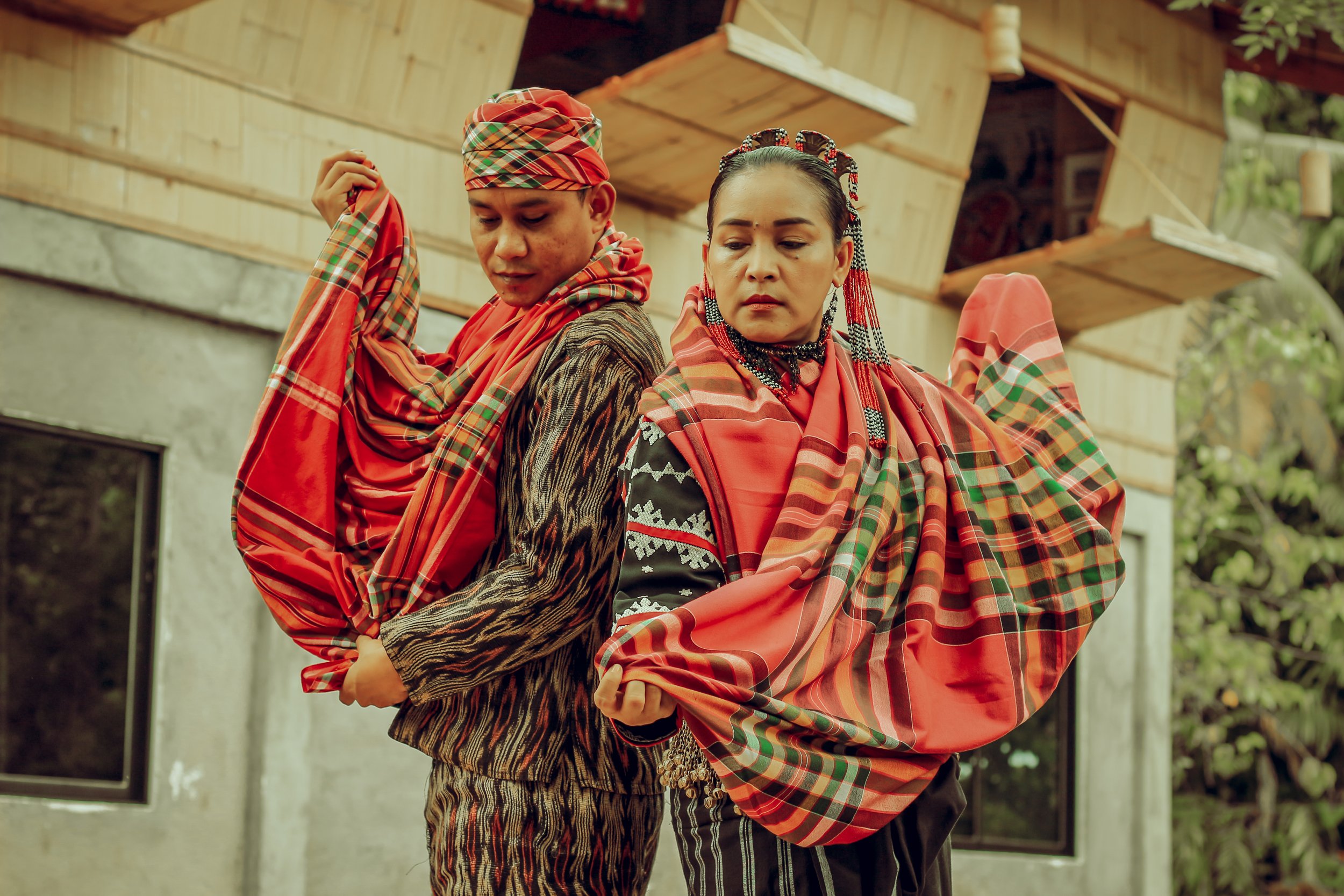traditional Tboli music and dance
Lake Sebu, Philippines
Photo: Romeo Muyco Espina
Through their gorgeous performances, the enthralling music and dance ensemble Helobung plays an essential role in the stewardship of Indigenous culture in the Philippines. In their striking red-and-black handwoven attire, and backed by a lush soundscape of traditional percussion, their intricate and expressive dancing masterfully interprets what they call the “tales, tunes, and threads” that sustain the Tboli people. By evoking the finest details of life among the Tboli, Helobung weaves a universally relevant message of cultural resilience and interdependence with nature.
Helobung means “endless joy” in the language of the Tboli people, who hail from the shores of Lake Sebu in the southern highlands of Mindanao, the southernmost of the larger islands of the Philippines. As Spanish and later U.S. colonists took power in the region, traditional Tboli cultural practices, centered on a multifaceted, environmentally sensitive animist faith, came under threat. Particularly after World War II, Indigenous peoples were steadily displaced from fertile lowlands to the more arid highlands. Communal resistance to encroaching development, and the cultural endangerment that followed it, have led to a strong cultural preservation movement among the Tboli.
Helobung, founded nearly four decades ago by young Tboli artists, has become indispensable to the generational transfer of this cultural heritage, both within their community and to audiences around the world. They last came to the U.S. in 1998 to present as master artists at the Smithsonian Folklife Festival—before some of the current members were even born. The troupe now includes children and students of that first group of performers, who grew up immersed in the skills and the rituals of Tboli culture and are now passing this knowledge on through a “school of living tradition” that Helobung runs in Mindanao.
Returning to the States after a quarter-century hiatus, this special touring presentation of Helobung features an ensemble of five performers who share roles as dancers, singers, and musicians. The percussion that sets the stage for the dance is reminiscent of a gamelan ensemble, featuring klintang (a series of small metal gongs), tnonggong (a small two-headed barrel drum), and the larger tambol drum. These are supplemented by melodic instruments like the two-stringed hegelung lute. Each intricate dance tells a story, whether depicting life cycle rituals or the Tboli’s profound understanding of the natural world. The visual symbolism extends to the performers’ clothing, richly handwoven and embroidered. As they perform, Helobung’s dancers extend and enhance their movements through graceful manipulation of the Tboli t’nalak, cloth of local abacá fiber woven with patterns given to the maker in a dream.
The Tboli worldview that Helobung shares through their dances reflects their deep commitment to harmony with nature. “All the elements come from our community and our environment,” says Helobung leader Michael Yambok. “It’s part of life. Dance and music are in our lives. When we perform, we don’t change anything about ourselves. The movements and expressions, the rhythm and melody—that’s who we are.”
Helobung is part of Center Stage, a public diplomacy initiative of the U.S. Department of State's Bureau of Educational and Cultural Affairs with funding provided by the U.S. Government, administered by the New England Foundation for the Arts in cooperation with the U.S. Regional Arts Organizations. General management is provided by Lisa Booth Management, Inc.


